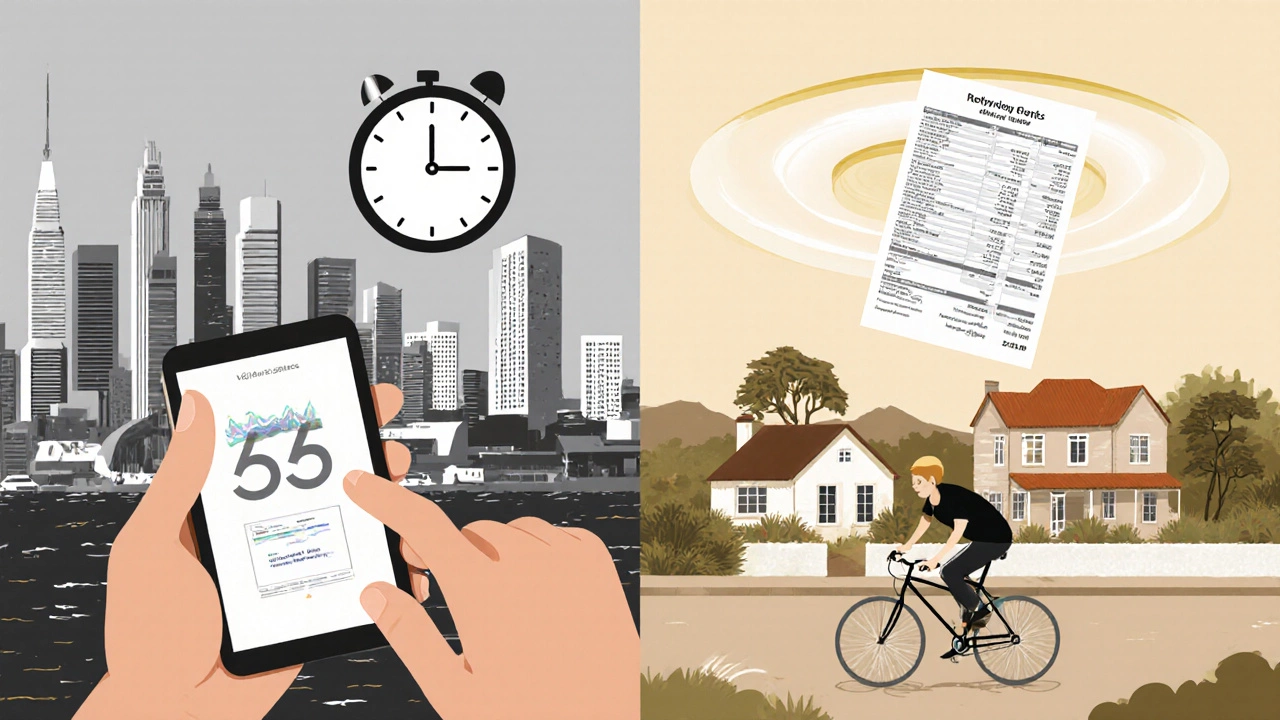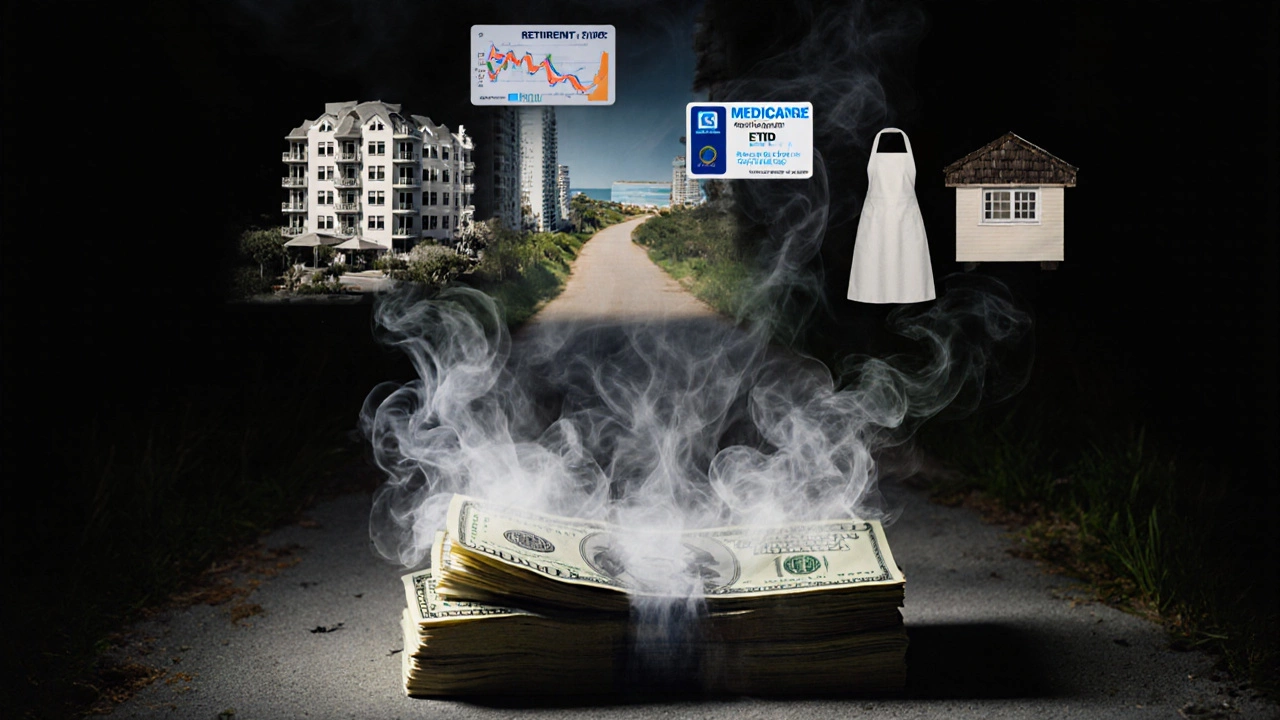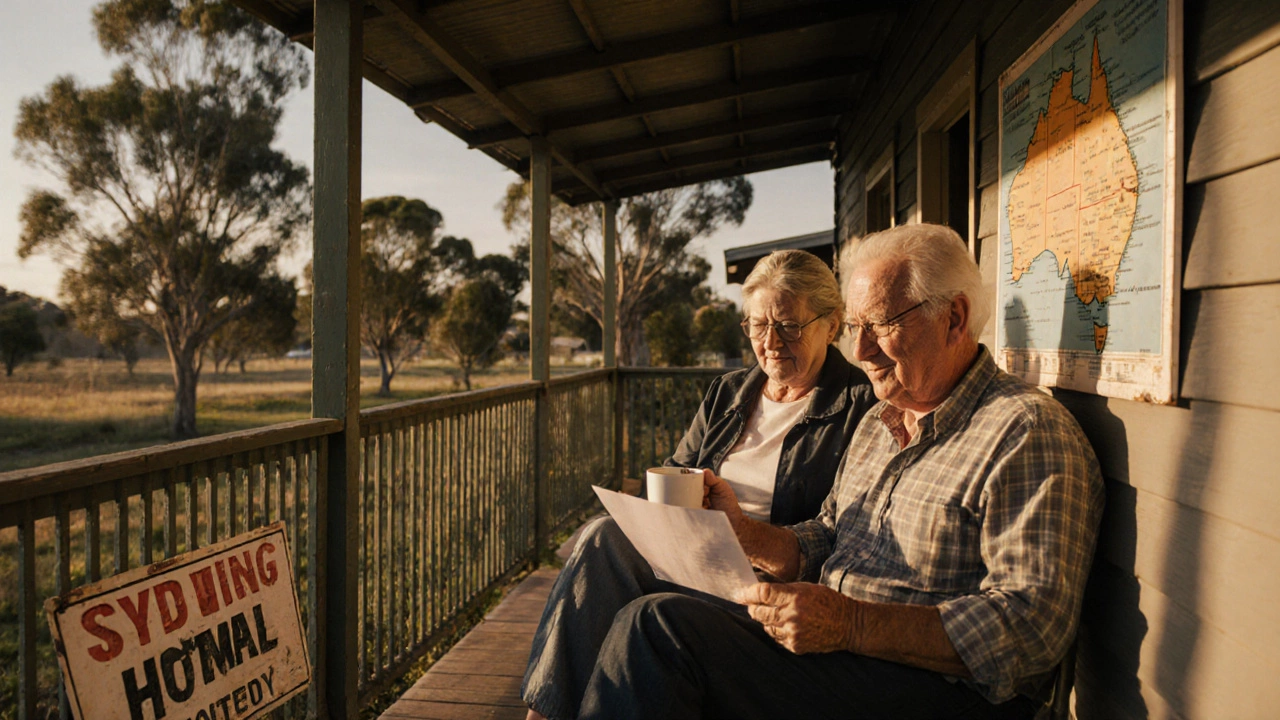Australia Early Retirement Calculator
Your Retirement Details
Key Considerations
ASFA Standard: $45,000/year for comfortable retirement in Australia.
Age Pension Eligibility: Not available until age 67 in 2025.
Super Withdrawals: You can't access super before preservation age (55-60).
Your Retirement Timeline
Enter your details and click calculate to see how long your savings will last.
You’ve saved $300,000. You’re 55. You’re tired of the 9-to-5 grind. You look at your bank account and ask: Can I retire at 55 with $300K? The answer isn’t yes or no-it’s "it depends." And if you’re in Australia, the stakes are higher because your cost of living, healthcare, and super rules don’t play nice with simple assumptions.
How Long Will $300,000 Last in Retirement?
Let’s start with the basic math. If you withdraw $20,000 a year from $300,000, it looks like it’ll last 15 years. That gets you to 70. But inflation doesn’t care about your plans. At 3% annual inflation, $20,000 today will be $34,000 in 20 years. If you live to 85, you’re running out of money before you hit your late 70s.
Most retirees in Australia live on about $45,000 a year for a comfortable lifestyle, according to the Association of Superannuation Funds of Australia (ASFA). That means $300,000 would run out in under seven years if you’re spending at that level. And that’s without factoring in rising medical bills, home repairs, or unexpected emergencies.
Superannuation Rules Block Early Access
Here’s the catch most people miss: you can’t just withdraw your super at 55. Your preservation age-the age you can legally access your super-is between 55 and 60, depending on when you were born. If you were born after June 30, 1964, your preservation age is 60. So if you’re 55 and trying to retire now, you might not even be able to touch your super yet.
Even if you’re eligible to access it, there are rules. You can’t just take a lump sum and spend it all. Most people use a transition-to-retirement pension (TRIS), which lets you draw between 4% and 10% of your balance each year. So with $300,000, you’re looking at $12,000 to $30,000 a year max-before tax. That’s not enough to live on in Sydney if you’re not getting other income.
What About the Age Pension?
Many Australians assume the government will bail them out with the Age Pension. But it’s not a safety net for early retirees. You can’t claim the Age Pension until you’re 67 (as of 2025). That’s a 12-year gap between retiring at 55 and getting government support.
Even then, the Age Pension is modest: about $24,000 a year for a single person. If you’re living on $300,000 in savings, Centrelink will assess your assets. If you have more than $315,000 in assessable assets (excluding your home), your pension is reduced. At $300,000, you might still get a partial payment-but only after you turn 67.

Where Are You Living? Location Changes Everything
If you’re in Sydney, $300,000 won’t stretch far. Rent for a one-bedroom apartment in the inner suburbs averages $650 a week. That’s $33,800 a year just for housing. Utilities, groceries, transport, and phone add another $15,000. You’re already at $50,000 a year before healthcare, insurance, or leisure.
But if you move to regional Queensland, Tasmania, or regional South Australia? Rent drops to $350-$450 a week. Groceries cost less. Public transport is cheaper. You might cut your annual cost of living to $35,000. Suddenly, $300,000 could last 8-10 years. That’s not retirement-it’s a long holiday. But it’s possible.
Can You Make Your Money Work Harder?
Leaving $300,000 in a savings account is a recipe for losing money. Inflation eats away at your balance. You need growth.
Investing in a diversified portfolio-mix of shares, ETFs, and bonds-could generate 5-7% annual returns after fees. That means $15,000 to $21,000 a year in income, without touching the principal. Combine that with a part-time job, rental income, or side gig, and you’re looking at $30,000-$40,000 a year. That’s doable in regional Australia.
But here’s the trade-off: investing means risk. The market can drop. You could lose 20% in a bad year. If you’re not comfortable with that, you’re better off working longer or downsizing.

Real-Life Examples
Take Sarah, 56, from Newcastle. She had $320,000 in super and retired early. She moved to a small coastal town, bought a modest unit for $280,000 (paid in cash), and now rents out her old house for $550 a week. Her super gives her $18,000 a year. Rental income adds $28,600. She works 12 hours a week at a local café for $300. Total income: $46,600. She’s not rich-but she’s not broke. She has health insurance, a car, and weekends at the beach.
Now compare that to Mark, 55, in Melbourne. He had $300,000 saved. He thought he could live off interest. He didn’t invest. He didn’t downsize. He kept his mortgage. He spent $50,000 a year. Three years later, he’s down to $150,000 and going back to work part-time.
What You Need to Do Before You Quit
If you’re serious about retiring at 55 with $300,000, here’s your checklist:
- Confirm your preservation age-don’t assume you can access super at 55.
- Calculate your real annual expenses, not your dream budget.
- Move to a lower-cost area if you’re in Sydney, Melbourne, or Brisbane.
- Downsize your home or rent it out for passive income.
- Invest your savings wisely-don’t leave it in cash.
- Plan for healthcare-private health insurance costs $2,000-$4,000 a year.
- Have a backup plan: part-time work, consulting, or gig economy jobs.
Is $300,000 Enough? The Bottom Line
No, $300,000 isn’t enough to retire comfortably at 55 in most of Australia-if you’re relying on it alone. But it can be enough if you’re strategic.
You need to combine it with:
- Lower living costs (regional move)
- Passive income (rental property, dividends)
- Part-time work
- Smart investing
- Delaying super withdrawals until you’re legally allowed
Retiring at 55 isn’t impossible. But it’s not about how much you have-it’s about how you use it. Most people who retire early with less than $500,000 do it by living differently, not spending less. They trade big-city life for quiet towns, luxury for simplicity, and security for freedom.
If you’re willing to make those trade-offs, $300,000 can buy you time. But if you think it’ll buy you comfort without change-you’re setting yourself up for a hard reset in your late 60s.
Can I retire at 55 with $300,000 in Australia?
It’s possible, but only if you’re willing to make major lifestyle changes. You’ll need to move to a lower-cost area, downsize your home, invest your savings wisely, and likely supplement your income with part-time work. Without these steps, $300,000 will run out in under 10 years, especially if you live in Sydney or Melbourne.
How much super do I need to retire at 55?
For a modest lifestyle in Australia, you’ll need at least $400,000-$500,000. For a comfortable lifestyle, $700,000 or more is safer. With $300,000, you’ll need to rely on other income sources like rental property, part-time work, or the Age Pension after age 67.
What’s the earliest age I can access my super?
Your preservation age depends on your birth date. If you were born before July 1, 1960, it’s 55. If you were born after June 30, 1964, it’s 60. You can’t access your super before this age unless you meet strict conditions of release, like permanent disability.
Can I get the Age Pension if I retire at 55?
No. The Age Pension eligibility age is 67 as of 2025. You must wait until then, even if you’ve already stopped working. Centrelink will also assess your assets and income. If you have $300,000 in savings, you may receive a reduced pension or none at all until your assets drop below the threshold.
How can I make $300,000 last longer in retirement?
Invest your savings in a balanced portfolio to earn 5-7% annually. Move to a regional area where housing and living costs are lower. Downsize or rent out your home. Take on part-time work-even 10 hours a week can add $15,000-$20,000 a year. Avoid large, one-off expenses like buying a new car or taking expensive holidays.

